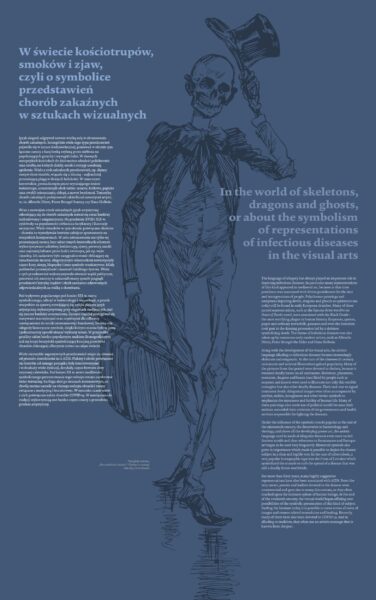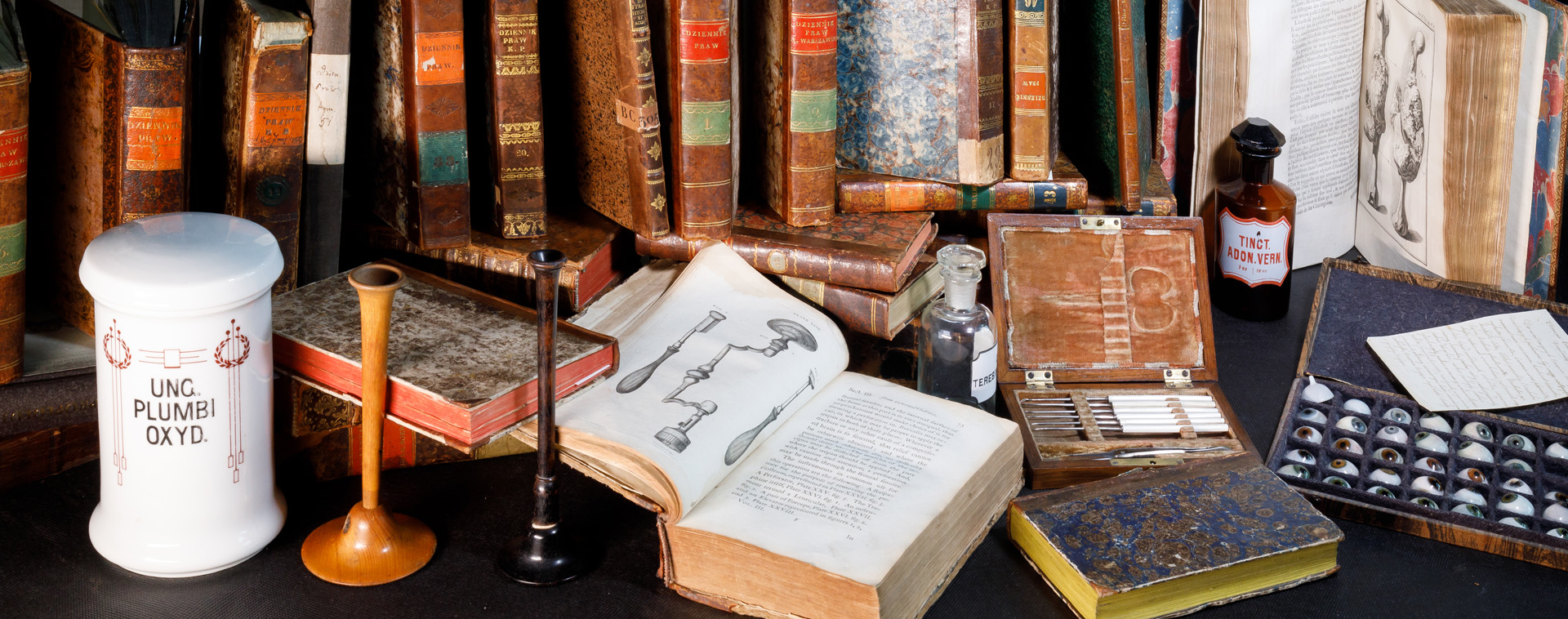 We would like to present our new online exhibition entitled “In the world of skeletons, dragons and ghosts, or about the symbolism of representations of infectious diseases in visual arts.” Due to the current epidemiological situation, it is currently only available in the virtual world, but after returning to normality (we hope as soon as possible), we invite you to see it at the Medical University of Warsaw – in the Library and Information Center.
We would like to present our new online exhibition entitled “In the world of skeletons, dragons and ghosts, or about the symbolism of representations of infectious diseases in visual arts.” Due to the current epidemiological situation, it is currently only available in the virtual world, but after returning to normality (we hope as soon as possible), we invite you to see it at the Medical University of Warsaw – in the Library and Information Center.
The language of allegory has always played an important role in depicting infectious diseases. In particular many representations of this kind appeared in mediaeval art, because at that time pestilence was associated with a divine punishment for the sins and transgressions of people. Polychrome paintings and sculptures depicting devils, dragons and ghouls as epidemics can today still be found in early European churches. Many of these sacred representations, such as the famous danse macabre (or Dance of Death) motif, were associated with the Black Death – the most terrifying plague in human history. Emperors, queens, popes and ordinary townsfolk, peasants and even the homeless took part in the dancing procession led by a skeleton symbolizing death. The theme of infectious diseases was also taken up by numerous early modern artists, such as Albrecht Dürer, Peter Bruegel the Elder and Hans Holbein. Continue reading ““In the world of skeletons, dragons and ghosts, or about the symbolism of representations of infectious diseases in the visual arts””
